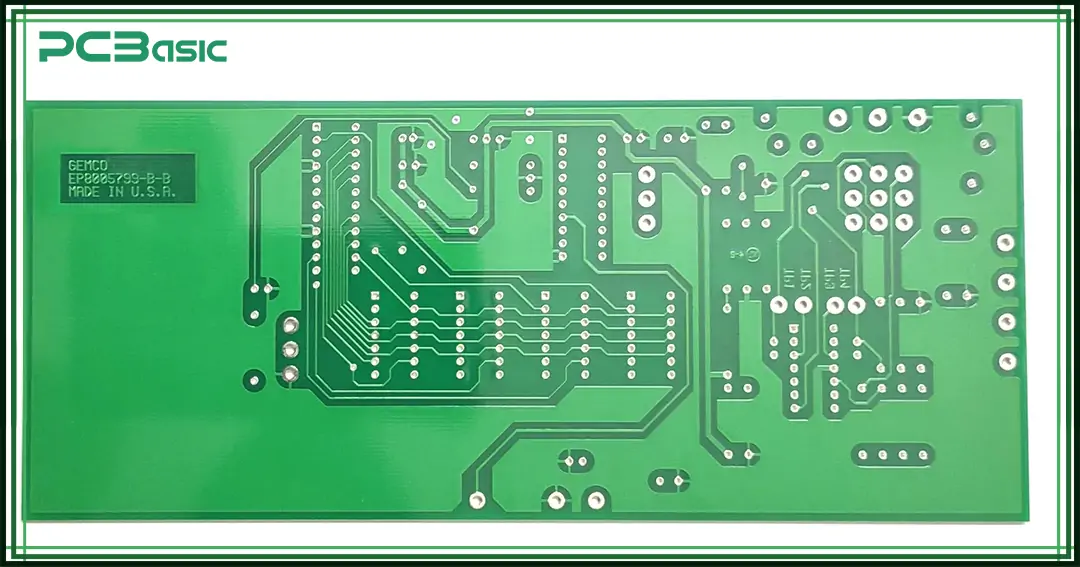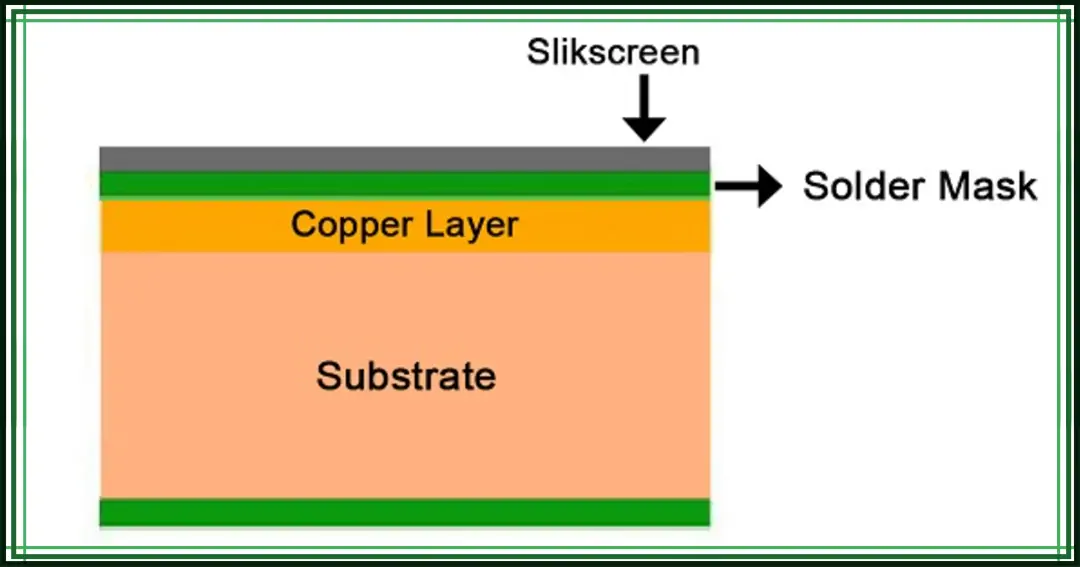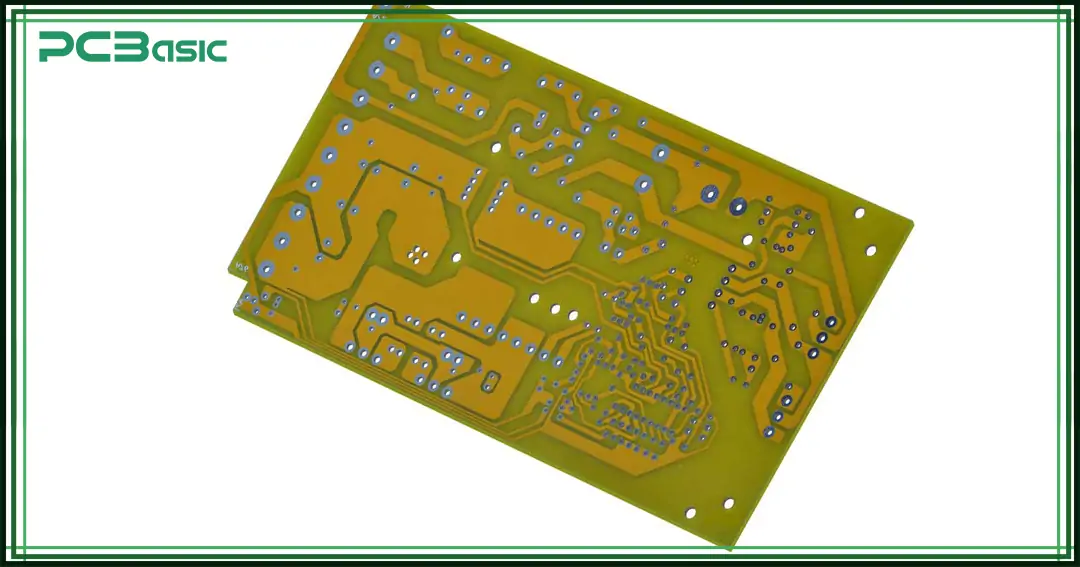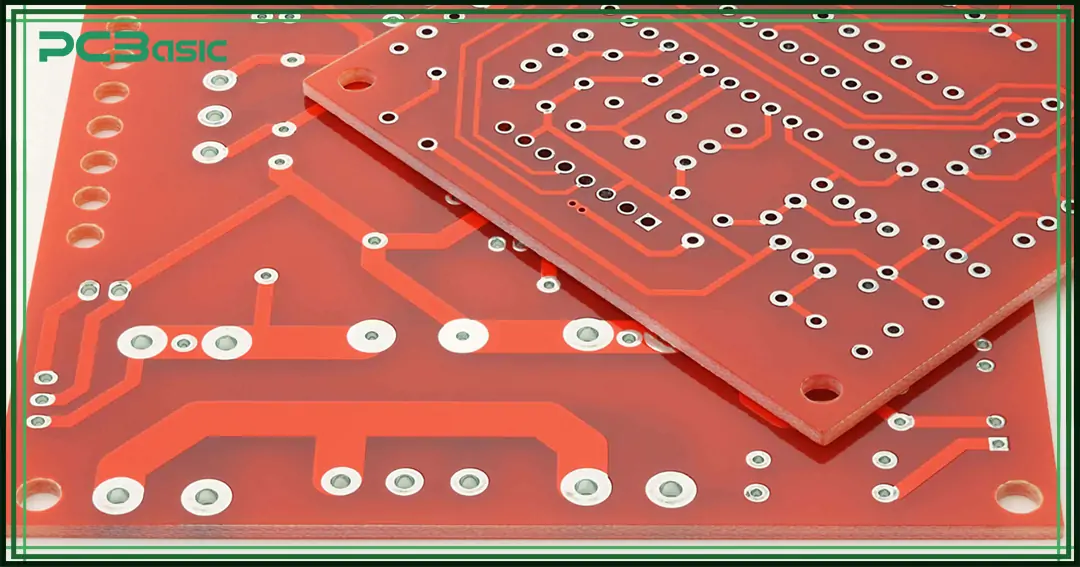Global high-mix volume high-speed Shenzhen PCBA manufacturer

Ru
9:00 -18:00, Mon. - Fri. (GMT+8)
9:00 -12:00, Sat. (GMT+8)
(Except Chinese public holidays)





Global high-mix volume high-speed Shenzhen PCBA manufacturer

Ru
9:00 -18:00, Mon. - Fri. (GMT+8)
9:00 -12:00, Sat. (GMT+8)
(Except Chinese public holidays)





HomePage > Blog > Knowledge Base > What Is a Single-Layer PCB?
When choosing a circuit board, the type of circuit board to use depends on the complexity, functionality, and cost of the electronic product design. One of the most basic and widely used circuit board types is the single-layer PCB - also known as single-sided PCB or 1-layer PCB. These boards are crucial to many simple and cost-sensitive electronic devices.
In this blog post, we will cover all about single-layer PCBs, including how they are made, their usage scenarios, and how they differ from multilayer PCBs.

A single-layer PCB is a circuit board with only one side of the circuit. This side is usually covered with a layer of copper, used to connect electronic components. It does not have many internal lines like a multilayer PCB and can only route signals on one side. Therefore, the single-layer PCB has a simple structure and low cost. It is especially suitable for some products with basic functions and limited budgets.
Single-layer PCB is mainly composed of four layers, including substrate, conductive layer, solder mask and silkscreen layer.

1. Substrate:
This is the bottom of the circuit board, similar to a foundation, which is used to support the entire board. It is generally made of fiberglass (FR-4), which is strong and insulating, and non-conductive. Some cheaper boards may also use paper-based materials for the substrate, but they have lower performance.
2. Conductive Layer:
This is a layer of copper foil attached to the substrate, which is used to form the circuit paths. The circuits are connected through this copper layer. Usually only one side of the board has this copper layer, which is known as "single-sided wiring."
3. Solder Mask:
This is a layer of green (or other color) coating applied over the copper, mainly to protect the copper from rust, but also to prevent short circuits when soldering.
4. Silkscreen Layer:
This is the top layer used to print component numbers, symbols, or logos so that you know where each part should be installed, making assembly and maintenance easier.
In general, the four-layer structure allows the single-layer PCB to conduct electricity, secure components, and protect the circuits from damage. It is the most common circuit board structure for simple electronic products.

Single-layer PCBs (single-sided printed circuit boards) offer the following key benefits, making them particularly suitable for simple and cost-sensitive applications:
1. Low Cost
• Material Savings: Only one layer of copper-clad substrate is used, eliminating the need for multilayer lamination.
• Simplified Manufacturing: Fewer processes (e.g., drilling, etching) and higher production yield, ideal for mass production.
2. Simple Design
• Straightforward Layout: All traces are on one layer, avoiding complications like vias or interlayer interference and shortening design time.
• Easy Repairs: Components and traces are clearly visible, simplifying troubleshooting and soldering.
3. Fast Production
Streamlined Process: No multilayer alignment or complex fabrication steps, enabling quick prototyping and mass production.
4. High Reliability
Stable Structure: No risks of interlayer connection failures (e.g., via defects), suitable for stable environments.
5. Lightweight & Thin
Only one substrate layer, making it ideal for weight- and thickness-sensitive devices (e.g., consumer electronics).
6. Ideal for Low-Frequency/Simple Circuits
Suitable for basic electronics (e.g., power modules, LED boards, toys) without high-frequency signal interference issues.
Therefore, single-layer PCB fabrication is typically the best choice for projects that prioritize simplicity and low cost. It not only meets basic electrical connection needs but also offers excellent cost-effectiveness.

Single-sided PCBs are widely used in a variety of everyday electronic products, especially for devices with simple functions and low-cost requirements.
• Consumer electronics (toys, calculators)
• Power supplies & LED drivers
• Basic automation controls
• Educational kits (Arduino shields, breadboard alternatives)
• While single-layer PCBs are simple, smart design practices ensure success:
• Minimize Crossings – Use jumpers or creative routing to avoid overlaps.
• Optimize Component Placement – Group related parts to reduce trace lengths.
• Wider Traces for High Current – Prevents overheating in power paths.
• Use a Ground Plane – Even a partial ground fill improves noise immunity.
A 2-layer PCB has copper layers on both sides of the board, allowing more complex circuit routing compared to single-layer designs.
Multilayer PCBs have three or more copper layers, often including internal signal layers, ground planes, and power planes.

Comparison Table
|
Feature |
Single-Layer PCB |
2-Layer PCB |
Multilayer PCB |
|
Copper Layers |
1 |
2 |
3 or more |
|
Complexity |
Low |
Medium |
High |
|
Cost |
Low |
Medium |
High |
|
Size Optimization |
Poor |
Better than single |
Excellent |
|
Signal Routing |
Limited |
Moderate |
Advanced |
|
Common Use |
Basic electronics |
Consumer products |
Advanced electronics |
Although many high-end electronic products now use complex multilayer circuit boards, the single-layer PCB is still the most common and cost-effective option for simple circuits. Whether you are a beginner or an experienced engineer, learning to use a good single-layer PCB can help you save a lot of time and cost, and the function can meet your needs.

Assembly Enquiry
Instant Quote